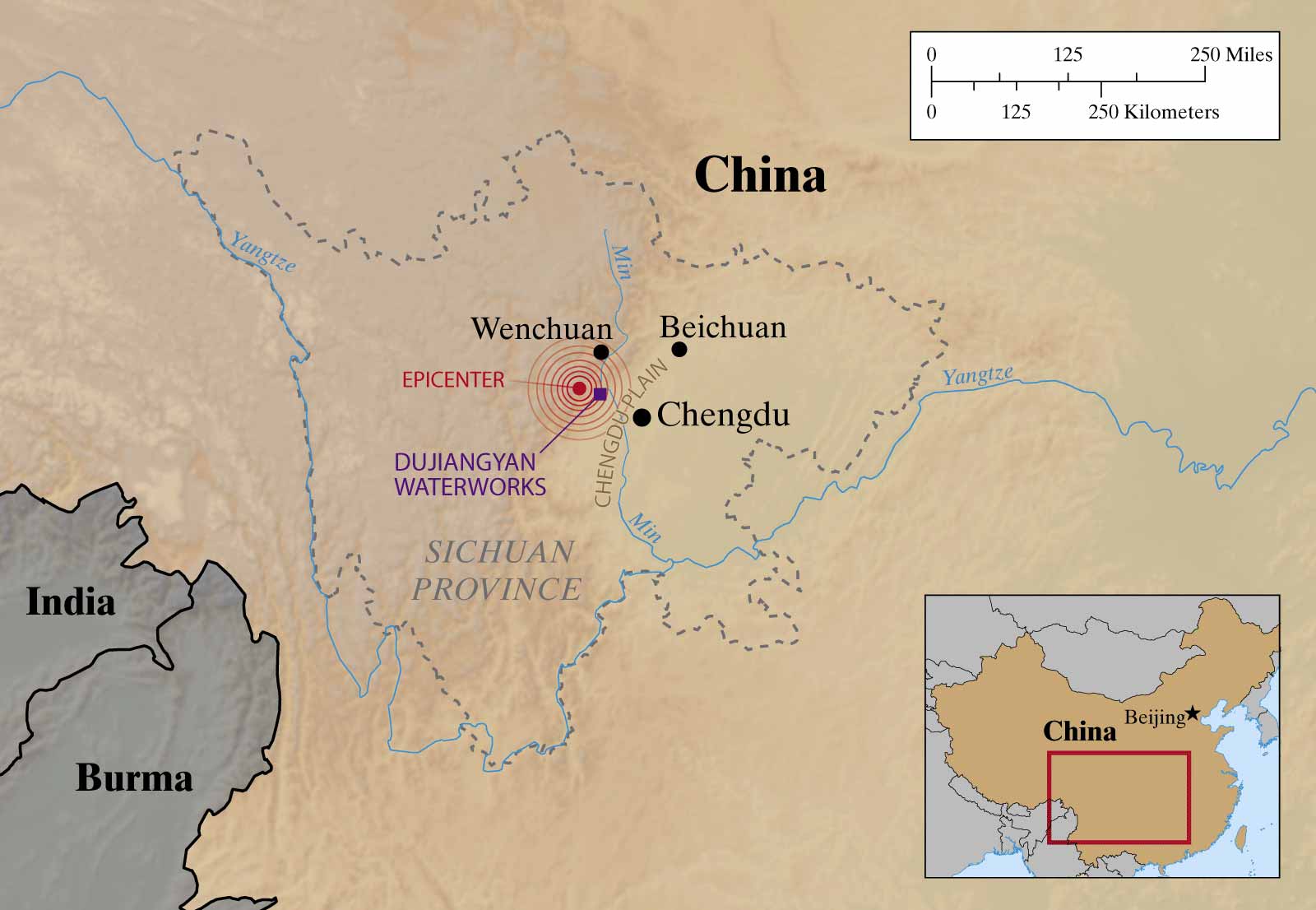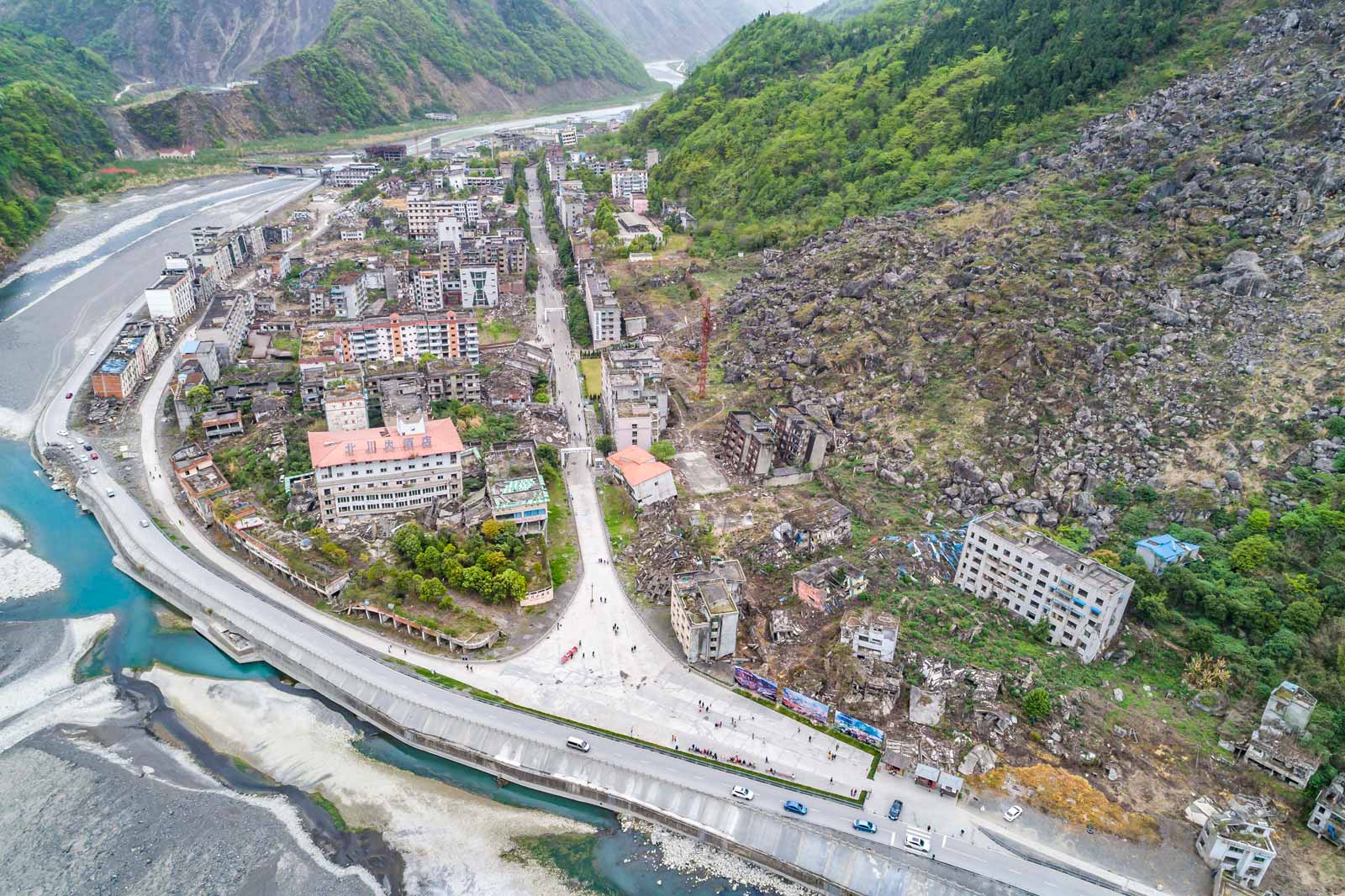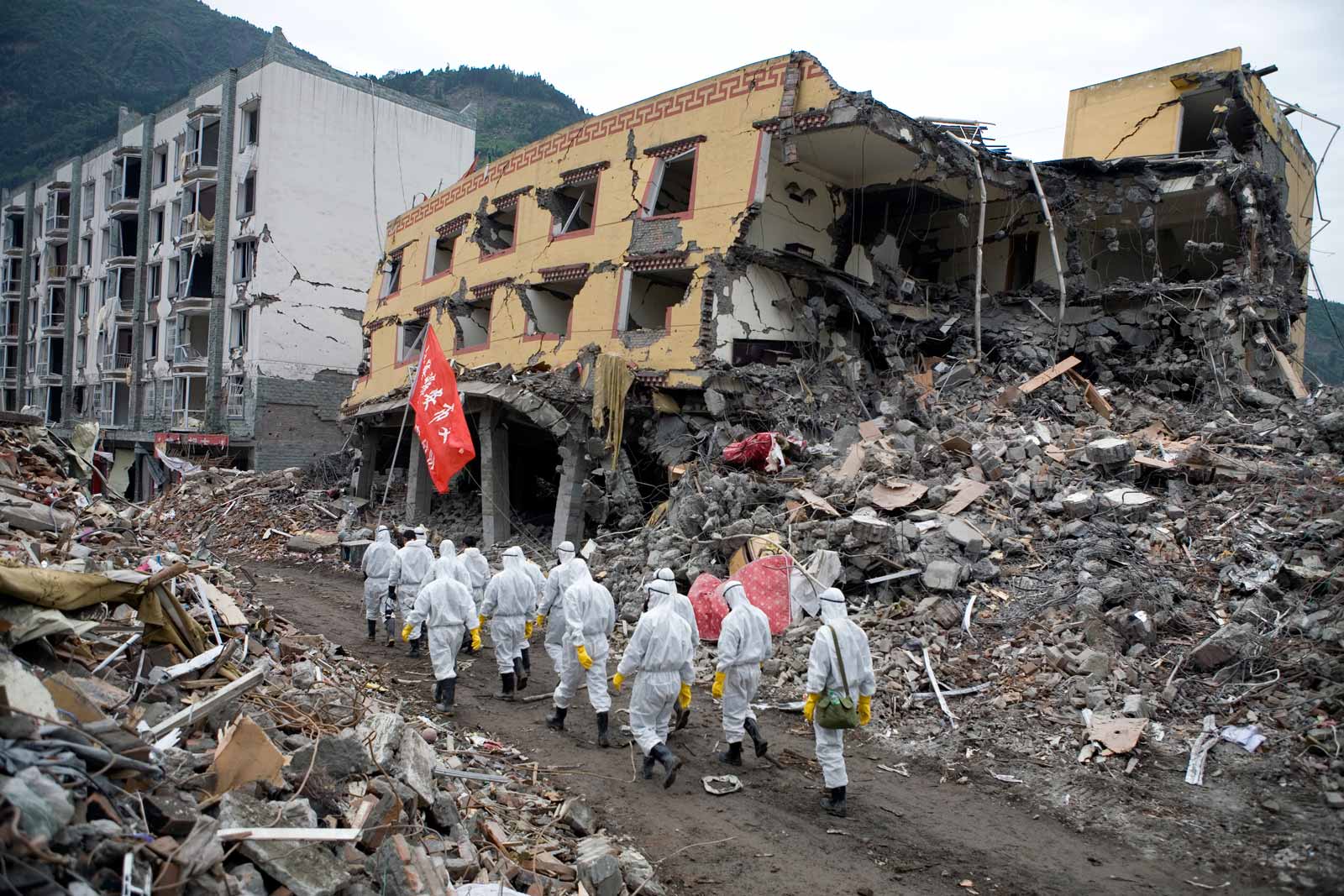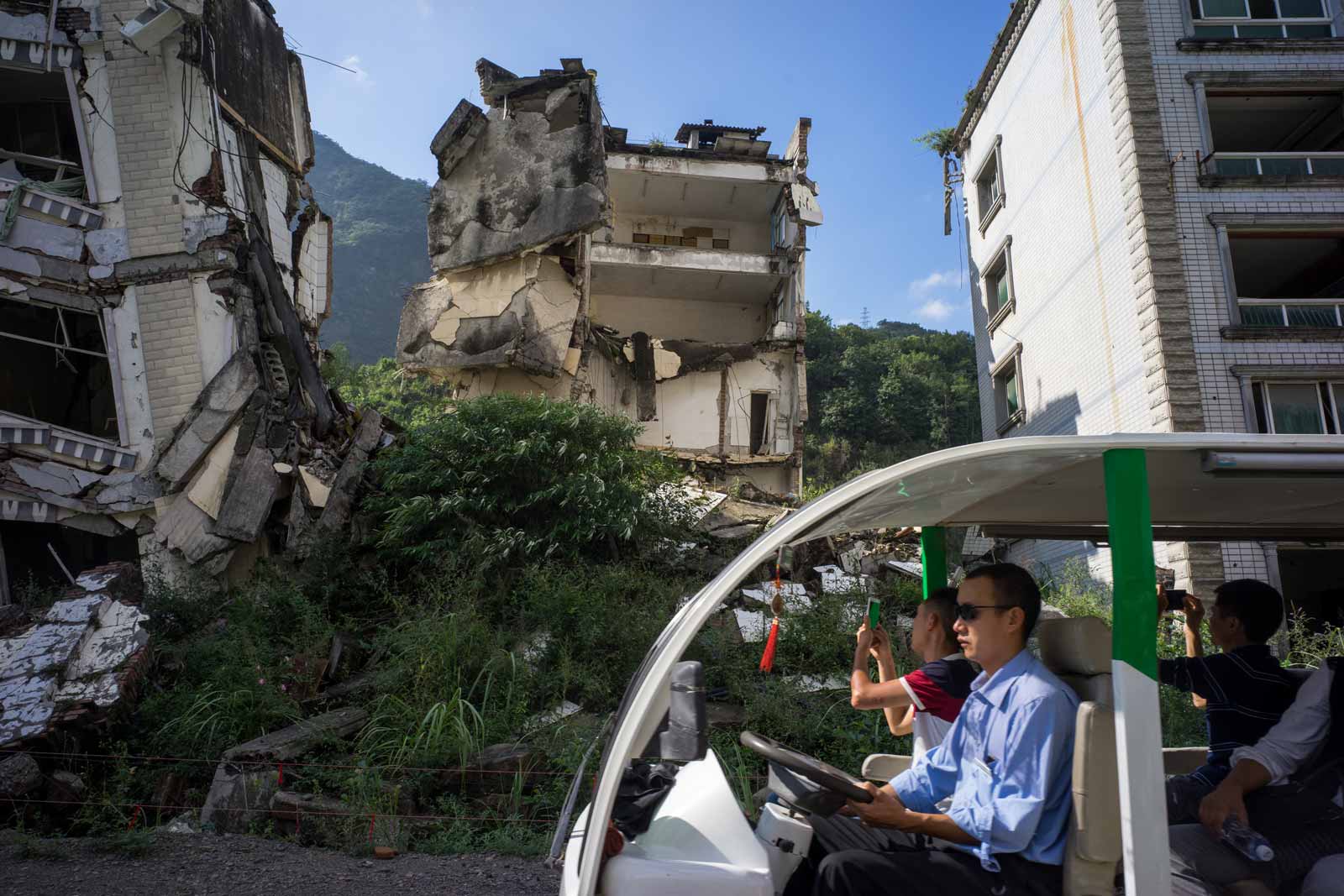The province of Sichuan is a microcosm of China. Its east is flat, prosperous, and densely settled by ethnic Chinese. Its mountainous west is populated by poorer minorities, but possesses resources that help make the east rich.
In Sichuan, the highlands’ bounty is water and silt, which rush down from the Tibetan Plateau to the plains below through an ingenious set of irrigation waterworks at the town of Dujiangyan. Soon after this system was built, some 2,300 years ago, the intensive agriculture that it made possible turned the region into one of China’s economic dynamos, producing so much wealth that it helped the first emperor of China consolidate numerous fragmented states into one powerful realm.
It was just north of Dujiangyan that one of the most significant earthquakes in Chinese history struck on May 12, 2008, killing 69,000 people and leaving another 18,000 unaccounted for. The quake occurred during a time of enormous social ferment in China brought on by rising expectations and the ability to express them through the Internet, which the authorities had not yet brought to heel. This made the earthquake seem like a portent of enormous change, perhaps leading to a more open society. A decade on, the quake was indeed an omen of change, but not in the way that many expected.
The year 2008 was meant to be China’s coming-out party as a superpower. After intense lobbying and setbacks, it had won the right to host that summer’s Olympics, and had lavished money on new architectural landmarks and an extravagant ceremony.
But the year started badly. A series of snowstorms in January killed scores of people and crippled the country’s infrastructure. Then, in March, riots broke out across Tibet against Chinese control. That spread internationally, disrupting the iconic Olympic torch relay, which had begun on Mount Olympus in Greece and was to end with the Games’ opening in Beijing. Routes were changed and shortened; in Paris the flame was even extinguished. Many Chinese seethed at the unfolding debacle.
The earthquake stopped these disputes in in their tracks. In addition to the terrible death toll, the quake had injured more than 374,000 people and left some 5 million homeless. The sheer scale of the tragedy united China and temporarily silenced critics.

It also presented the country’s leadership with the chance for a needed reset. Within ninety minutes of the quake, China’s premier, Wen Jiabao, was on a plane to Sichuan. The government mobilized 130,000 soldiers and paramilitary police, while the Communist Youth League reported that, within a week of the disaster, it had 200,000 volunteers active in the mountainous region. These were the familiar actions of a competent, authoritarian state, but something else happened, too. Across society, an unprecedented outpouring of support welled up across the land. Many Chinese were now prosperous and eager to contribute to society. People spontaneously donated time and money, driving from far-off provinces in cars laden with food and water or renting out trucks to deliver supplies. Companies took up collections, and rescue crews raced to the scene to dig for survivors.
These weren’t just ad hoc measures, but well-organized ones, thanks to the use of relatively new technologies such as blogs and email listservs. Non-governmental organizations set up a coordinating office and over the coming months channeled an estimated $7 billion in private funds to the relief effort.
Initially, the government welcomed these efforts. Especially during the first week, when its organizational structure in the mountainous regions was badly damaged, the Chinese state worked with the NGOs, and officials learned, often for the first time, that society had organizational forces other than the Communist Party. Even a few years later, optimists were still writing about how China was in a new era in which citizens and the government could solve problems as equals.
But this hope was a mirage. The enthusiastic volunteers were real enough, but within days of the quake, the government had begun to push back. Officials set up a system of vehicle registration. Letters of introduction were demanded. A survey of NGOs by Beijing Normal University showed that the vast majority were able to operate only if they had government connections. Helping out became a privilege, not a right.
If the government viewed these donors as meddling do-gooders, it had no tolerance at all for those who came with unpleasant questions. Some journalists and critics wondered, for example, why just forty miles north of one of China’s most prosperous cities, Chengdu, minorities were living in substandard housing. And why, especially, had almost all the schools collapsed?
One of the first on the scene was the veteran democracy activist Tan Zuoren. With the help of a network of volunteers, he surveyed sixty-four schools, finding that 5,600 students died, most of them buried alive in their classrooms. Tan’s work was captured on film by the independent historian and documentarian Ai Xiaoming, whose 2009 film Investigation by Citizens showed Tan walking through the spectacular mountain regions to visit the sites of the collapsed schools, lighting incense and grieving with relatives along the way. The Chengdu-based blogger Huang Qi publicized Tan’s work and helped coordinate the investigation.
The artist Ai Weiwei expanded on Tan’s work, mobilizing 160 volunteers to investigate the collapse of seven hundred schools. His team identified and named 4,851 of the dead students. In early 2010, Tan was put on trial for “subversion of state power,” and was sentenced to five years in prison. When Ai Weiwei went to attend the trial, he was beaten (by people he took to be security officials) and subsequently needed surgery in Germany. There, he unveiled one of his most famous installations: 9,000 backpacks used by schoolchildren. From afar, the installation spelled out something a mother had said of her dead daughter: “She lived happily for seven years in this world.”
Early on, a senior government official made a prescient warning: “Disaster relief should be quick, but reconstruction should be slow.” The official’s fear was that his underlings would rush out every sort of slapdash scheme to rebuild the destroyed region. In this, he was not mistaken.
Over the centuries, ethnic Chinese, or Han Chinese, had already pushed minority groups into the mountains, giving them the generic name of “Qiang.” The word itself is Chinese and originated as a name for a deer-like animal—a common case of the Chinese language using derogatory terms for other peoples. Today, the term “Qiang” refers to a people who call themselves the Rma. They number about 306,000. Approximately 10 percent of this population died in the earthquake.
Today’s state—as, in centuries past, dominated by ethnic Chinese—offered a modern version of historic patterns of displacement. First, Qiang cultural practices were recorded and turned into ethnographic objects as “intangible cultural heritage.” This was then packaged as a tourist destination for Chengdu’s inhabitants. Slogans were tossed about, such as turning the stretch from Chengdu to Jiuzhaigou scenic area into a “Tibetan-Qiang cultural corridor.”
Probably the most dubious example of this was in the town of Beichuan, which was one of the centers of the earthquake. Its ruins were not torn down or rebuilt but reinforced and left as an aestheticized freak show for visitors—a town in what scholars have called a “fixed stage of collapse.” One of its special features is the Earthquake Science Experience Center, where movies of earthquakes are shown. Opened in 2016, it is located directly beneath the site of the ruined Beichuan High School—a graveyard of hundreds of children.
Besides entertainment, visitors are encouraged to “work energetically for the country’s prosperity and glory.” The government’s heroism is emphasized, with Communist Party officials praised for working for the public good despite their personal losses.
The state’s dominance is reflected in Beichuan’s memorials. Over the years, locals have tried to put up their own small places of remembrance, but only government memorials are allowed. Most locals refuse to visit them because they get so much tourist traffic. Instead, the bereaved burn incense or put flowers at the site of their loved ones’ demise—but these are quickly cleaned away by the authorities. It is little wonder that a local teenage girl told a team of visiting Chinese and foreign researchers that “the city is rebuilt, we are finally settled and life takes up its course again, and yet people haven’t found peace and serenity.”
In China, the state’s presence is overwhelming—and often dictatorial. It locked up Tan Zuoren and beat up Ai Weiwei. It closed down the Chinese journalists’ trying to report on corruption. It bulldozed the Qiangs’ culture and means to turn them into minstrels for Chinese tourists. And yet, from the state’s perspective, these are perhaps regrettable side-effects of a larger good: its ability to rule.
This is what the political theorist Richard Löwenthal called a “development dictatorship”: it develops, therefore it is. It has impoverished mountain people and so, while mouthing pieties about participation and sending out teams of academics to conduct field surveys, it builds highways and hotels up into the mountains to rescue them from their own culture and history.
Advertisement
As for the do-gooders in Chengdu, the authorities understand that people need something to believe in—after all, in the past, people actually believed in Communism, too. So they pass NGO and charity laws that allow these bleeding hearts to band together—under government supervision, of course—to donate their time and money.
This is all very well—after the fashion of a harried parent who allows a child to cut the grass with a plastic mower. Except that, in reality, the child is a co-owner of the house and has ideas about how to manage the yard, while the parent obsessively demands control and recognition.
Thus, when China’s then leader, Hu Jintao, left power in 2012, one of the scenes shown at his farewell video tribute was of him visiting the site of the earthquake. Later, when Xi Jinping took office and issued his slogan of creating a “China Dream,” his propagandists included images of soldiers rescuing people from an earthquake. Good Samaritans are well and good, was their message, but it’s the big boys who do the real work.
Just as people were naïve to assume that the activism of 2008 would become the norm, though, it is also premature to conclude that today’s retrenched state dominance is the final word. When the surplus capital created by the Dujiangyan waterworks helped Qin Shihuangdi unite China for the first time more than two millennia ago, his empire seemed unassailable. And yet his zeal to unify and control was his undoing—he was deposed after just a decade in power.
China’s supreme rulers today also have a strong hold over their citizens, but their edifice might not be immune from seismic change in society.
Regarding Sim Chi Yin’s 2014 photograph: reporting for this story was supported by a grant from the Pulitzer Center for Crisis Reporting.






